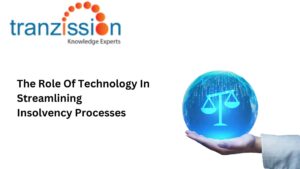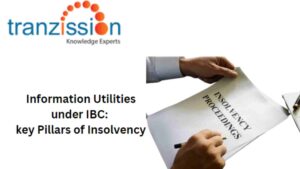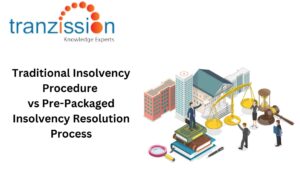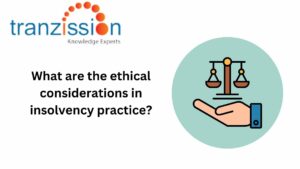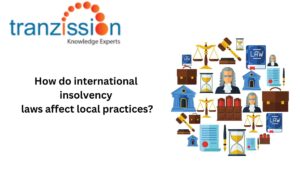
Difference between a liquidator and an insolvency professional
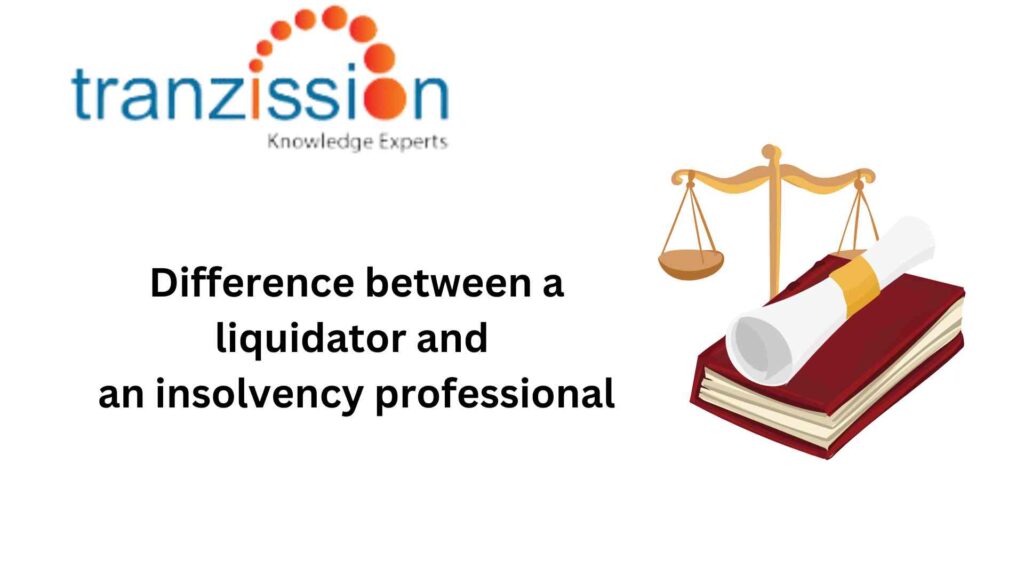
Table of Contents
This article aims at providing clarity on the distinct roles of a liquidator and an insolvency professional. Both of these positions are central to guiding a company through their financial difficulties, although the engagement of both in the insolvency process is distinct. While an IP has the main responsibility with supervising the resolution process having the objective of rescuing the corporate debtor, whereas a liquidator will step in only when the resolution is not possible, or the attempt on resolution has failed.
Who is an Insolvency Professional?
An Insolvency Professional (IP) is a registered professional who helps to revive or dissolve insolvent individuals, companies, LLPs, or partnerships as per the definition given under section 3(18) of the Insolvency and Bankruptcy Code, 2016 (hereon forward known as the “the Code”). IPs overlook the entirety of the insolvency and bankruptcy procedure. They are authorised by the Insolvency and Bankruptcy Board of India (IBBI) to analyse the financial statements of the entity, assess the financial position of the entity, make arrangements to sell the assets of the company, etc.
Who is a Liquidator?
A liquidator is an insolvency professional appointed by the National Company Law Tribunal (NCLT) in liquidation proceedings or members of the company itself in the case of voluntary liquidation, to terminate a company by selling its assets to pay its debts. The liquidator is appointed only when the liquidation process under section 33 of the Code has been initiated. According to the Code and the Insolvency and Bankruptcy Board of India (Liquidation Process) Regulations, 2016 (hereon forward known as the “Liquidation Regulations”), the powers and duties throughout the liquidation process mainly include, recovery and sale of the company’s assets, settling the creditor’s claims, and taking control of the company from the director’s and acting as the company’s director.[1]
| Aspect | Insolvency Professional | Liquidator |
| Definition | A qualified individual registered with the IBBI to manage the CIRP | An IP appointed by the NCLT to manage the liquidation process of the corporate debtor |
| Primary Objective | Resolve the corporate debtors financial distress, aiming to keep company as a going concern | Liquidate the corporate debtors assets and distribute the proceeds to the creditors |
| Qualifications and Requirements | Qualifications and Experience: The IBBI, has the power to specify the qualifications and experience required for IP as stated in section 207(2) of the Code. As per Regulation 5 of the Insolvency and Bankruptcy Board of India (Insolvency Professionals) Regulations, 2016: i) It is necessary for a candidate to have passed the Limited Insolvency Examination within 12 months before the date of his application for enrolment with the Insolvency Professional Agency (IPA), or has completed a pre-registration educational course ii) The candidate has completed the National Insolvency Programme, Post Graduate Insolvency Programme, or experience of 10 years in law, 10 years in management or a 2 year full time post graduate course in management, or 15 years in management iii) The candidate may also have 10 years of experience as a chartered accountant, company secretary, cost accountant, or an advocate. Registration of an IP: As per section 206 of the Code, it is mandatory for the candidate to register with the IBBI after passing the Limited Insolvency Examination, and it is necessary for an IP to be a member of the Insolvency Professional Agency (IPA) as per section 207. As stated under the Regulation 6(1) of the IP Regulations, this application must be submitted in Form A of the Second Schedule. Once the IBBI has verified that the applicant is eligible, the IBBI grants a certificate of registration to carry out the activities of an IP in Form B of the Second Schedule within 30 days of receiving the application. Code of Conduct: On successful registration, it is important that the IP abide by the Code of Conduct that is specified under the First Schedule.[2] |
i) The resolution professional (RP) that was appointed for the corporate insolvency resolution process (CIRP) is appointed as a liquidator by the NCLT. From this it can be implied that the liquidator will have the same qualifications as that of an IP/RP. ii) Regulation 3 of the Liquidation Process Regulations, states that the IP to be appointed as a liquidator or partner/director of a company should be independent, a related party, or an employee, owner or partner of the corporate debtor. In short, there should be no conflict of interest of the liquidator. Appointment: The liquidator is appointed by the Adjudicating Authority, the NCLT, as per section 34(1) of the Code when the insolvency process has failed, also known as the insolvency liquidation. The NCLT appoints the liquidator from the IP/RP who was supervising the insolvency process. The members of the company appoint the IP as the liquidator.[3] |
| Roles and Responsibilities | The primary role of an IP is to overlook the entire insolvency process, manage the assets and properties of the corporate debtor, forming the resolution plan, facilitating the liquidation or restructuring process, while complying the legal and regulatory requirements. By supervising the CIRP, the IP takes control and custody of the corporate debtor, and manages the operations of the corporate debtor as a going concern so that the business continues during the insolvency process, formulates Committee of Creditors (CoC)[4] as well as conducts the meetings[5]. However, the duties of the IP is regulated under the IBBI, with regular reporting of its progress to the IBBI and the NCLT. Further, the resolution plan is to be examined by the IP as per section 30(2) of the Code that is submitted by the resolution applicant and present this plan to the CoC for its approval. If the resolution plan is approved by the CoC, the IP/RP will submit it to the NCLT, [6] after which it may approved or rejected by the NCLT. If accepted, the company will start with a ‘clean slate’, if rejected the company will move forward with the liquidation process | the main role of the liquidator is winding-up of the company and distributing the assets of the corporate debtor amongst the creditors. The responsibilities of the liquidator at this stage is taking custody of the assets, valuation of the assets and selling the assets of the corporate debtor, settlement of claims, distribution of assets,[7] and the dissolution of the company under section 54 of the Code, in which the company is removed the Registrar of Companies. |
| Scope of Work | IPs have a very broad scope of work as they are involved with the corporate debtor from the first step of the insolvency process to the last step. This includes, management the assets of corporate debtor, continuing its business throughout the insolvency process, formulation of the resolution plan, and ensuring the approval of the resolution plan. The main aim of the IP is to ‘save’ the company, trying their best to revive the company, to restructure the company so that it is not terminated. If the resolution process is unsuccessful, and the company fails to be revived, restructured or rehabilitated, the IP initiates the liquidation process under section 33 of the Code and is appointed as the liquidator | a liquidator has a narrow scope of work, which relates to when the corporate debtor activities have been declared to be terminated, and the company cannot be revived. Only upon appointment can the liquidator take control of the debtors assets, valuation of assets, and sell their assets so as to maximises the returns for the creditors, and settling the claims, etc. The role of the liquidator ends on the dissolution of the company under section 54 of the Code. |
| Focus and Purpose | The primary focus of an IP is on resolution of the financial distress of the corporate debtor, while at the same time taking over the business operations of the corporate debtor during the insolvency process. This includes continuous management of the insolvency process, negotiation with the creditors, and trying to form a resolution plan that will be approved by the CoC and the NCLT to revive the company. | The liquidator has the main focus to ensure that the liquidation of the company goes smoothly, this comprises of selling the corporate debtors assets, settling the claims of the creditors and eventually removing the name of the company from the Registrar of Companies, hence, terminating the company. |
| Stages of Involvement | An IPs involvement in the insolvency process is from the beginning of CIRP to the end. The role of the IP starts on the admission of the insolvency application to the NCLT, where an IP is appointed as interim resolution professional under section 13 of the Code. After that the IP has the main responsibility to take control and custody of the corporate debtor’s assets, managing the operations of the corporate debtor as a going concern, while complying with the necessary legal requirements. The IP also facilitates the CoC, which is important for the approval of the resolution plan under sections 25 and 30 of the Code. If the CoC approves the resolution plan, the IP then submits the resolution plan before the NCLT. The decision of the NCLT is binding to all those involved in the resolution plan. The NCLT may approve the resolution plan, or reject the resolution plan. If the resolution plan is rejected under section 31(2) of the Code, the IP’s role is transition to a liquidator. | A liquidator’s role in the insolvency process is restricted to the final phase of the insolvency process, only after the resolution plans fails as per section 33 of the Code. The duties of the liquidator extends to verification the claims of the creditors, taking control and custody of the assets, settling the claims of the creditors, and distribution of the proceeds as per the priority listed under section 53 of the Code The liquidators duties ends on the dissolution of the corporate debtor and removal of the company’s name from the Registrar of Companies.[8] |
| Powers and Authority | The main responsibility of the IP is to initiate the insolvency process from its commencement. The IP may be appointed as an interim resolution professional or a RP, the IP then takes control of the assets of the corporate debtor, assessment of the financial situation, and to guarantee the continuation of the business operations during the insolvency process. This is important in order to stabilise the operations during CIRP to make an attainable resolution plan. On the formation and management of the CoC, have the authority to approve or reject the resolution plans. IPs may advise the CoC and the NCLT, to guide them on the difficulties of the insolvency process. Such as, the assessment of the resolution plan is important as these plans need to be either approved or rejected by the CoC or the NCLT, which then decides of whether the business/individual will be liquidated or bankrupt. Once it has been decided that the corporate debtor cannot be revived and the IP is appointed as the liquidator, this position then has the power to take control of the assets,. | The primary aim of the liquidator is to ensure that there is maximisation of returns form the liquidation of the assets and distribution of the proceeds to the creditors as per the priority of claims under section 53 of the Code. Upon realisation of assets and the claims are settled, the liquidator then must apply to the NCLT for dissolution under section 54 of the Code. Unlike, an IP, the powers and Functions of liquidator are particularly focused on the last phase, the winding-up of the company. Hence, marking the end of the CIRP. |
| End Goal | To achieve the resolution of the corporate debtor’s financial distress while preserving its value | To conclude the corporate debtor’s existence by liquidating assts and distributing proceeds according to the statutory priority. |
Can I Liquidate a Company Without an Insolvency Practitioner?
It is not advisable to liquidate a company without a liquidator and an insolvency professional (IP), regardless of whether it’s a voluntary liquidation or involuntary liquidation. Having both a liquidator and an IP ensures that the entire process adheres to statutory requirements, minimizing the risk of legal complications and safeguarding the interests of creditors. Without a qualified liquidator and IP, the liquidation could lead to non-compliance with legal obligations, mismanagement of assets, and potential legal disputes
Career in insolvency: Opportunities and Challenges
A career in insolvency is highly demanding, with both pros and cons. As seen above, there are many responsibilities to undertake and complexities to understand. The opportunities in this field include a diversity of roles, as your skill set will encompass not only administration but also work as analysts and consultants. Working as a liquidator and an insolvency professional (IP) provides professional growth by learning regulatory compliance, financial management, and strategic planning. IPs and liquidators also make an impact by assisting companies in recovering from financial distress. However, the challenges in this field include managing companies during financial difficulties and providing effective solutions under strict deadlines, navigating complex statutory and regulatory requirements, and balancing the interests of corporate debtors, creditors, employees, and stakeholders
For those interested in pursuing this path, Tranzission offers comprehensive course which are designed to equip an individual the necessary skills and abilities to excel in the insolvency and liquidation domain. Tranzission provides free online resources, mock examinations, and webinars. In addition to this, we provide online training sessions, specifically for those who are preparing to be an IP. These programs are tailored to meet the ever-evolving demands of this industry, ensuring that you are well-prepared to face the challenges and seize the opportunities that a career in insolvency presents
Conclusion
An IP and a liquidator may have similar qualifications, their roles, involvement, and objectives within the insolvency field are completely different. It is to be noted that an insolvency professional may be appointed as a liquidator, but it is not possible that a liquidator may be appointed as an IP as the role of the liquidator begins only when the insolvency process fails or it has been decided by the members of the company to wind-up the company.
An IP works towards re-establishing the corporate debtor, securing the continuity of its business operations as a going concern, trying to resolve its financial distress. The liquidator will only be involved when the efforts at resolution have failed and the company is heading towards dissolution.

